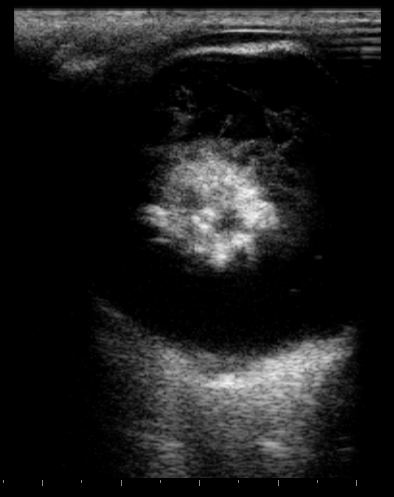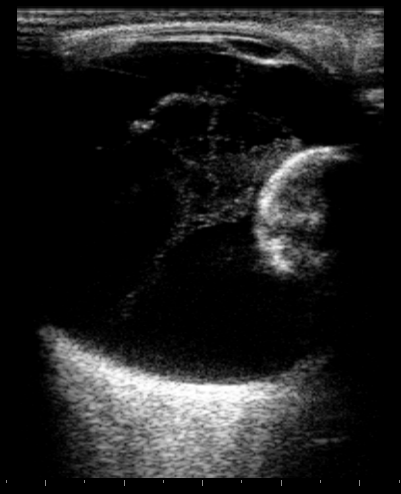[tab name=”The Case”]
A 9 year old labrador with droopy lower and upper eyelids, a somewhat enophthalmic globe with third eyelid protrusion and a miotic pupil normally means just one thing to me. But this dog had a somewhat painful eye as well which made me think of a second explanation of these signs. What was I thinking of?
[/tab]
[tab name=”David’s view”]
This triad of signs is classic of Horner’s syndrome where the ‘fight flight’ nerve dilating the pupil, opening the upper lid and bringing the eye forward, is not functioning as it should. But the inclusion of some ocular discomfort made me realise, for the first time in nearly 25 years on the job, that a corneal ulceration with intraocular inflammation could just about present with the same signs of miosis and globe retraction with blepharospasm.
The way to be sure of the diagnosis was using 0.1% phenylephrine and the two pictures below show the dog ten and twenty minutes after topical installation of this sympathomimetic agent.
The signs start to resolve within ten minutes and are fully (one might say over-fully!) ameliorated in twenty. This suggests a third order neuron defect as there is denervation hypersensitivity at the motor end plate. A closer look at the eye showed no signs of corneal ulceration or inflammation although interestingly tonometry showed a somewhat lower intraocular pressure which could indicate a mild uveitis.
The definitive diagnosis of what was causing the defect came with MRI showing increased signal intensity characteristic of an inflammatory lesion in the middle ear on the ipsilateral side (the big white blob if you are an imaging ignoramus as I am!). Hopefully resolution of this otitis media, maybe with a bulla osteotomy, will solve the problem but I’ll leave that up to the surgoens!
Many thanks to Abi at Dick White Referrals for this great scan!
[/tab]
[end_tabset]































You must be logged in to post a comment.